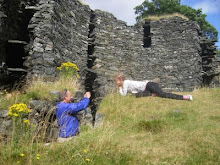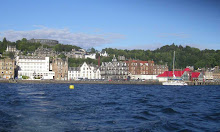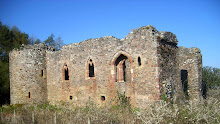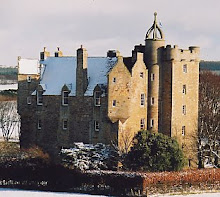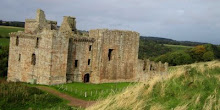Burns would have been amazed!
 So was I, by the schedule for a day guiding an Australian couple: Glenfiddich, Macallan, Glenlivet. But all became clear, since Jarrod, bartender at the Castle Hill Tavern, Sydney, knew whisky and this was the highlight of his European trip!
So was I, by the schedule for a day guiding an Australian couple: Glenfiddich, Macallan, Glenlivet. But all became clear, since Jarrod, bartender at the Castle Hill Tavern, Sydney, knew whisky and this was the highlight of his European trip!They enjoyed each distillery, but The Glenlivet seemed to take the honours. Glenlivet is also a favourite of mine for different reasons.
In Scotland we don't use the expression 'single malt'. It's either malt (from one distillery) or it's blended (many whiskies including grain whiskies). But it was not always so. To produce a consistent, and palatable brand in 1853 was a challenge and led to the first mixture of malts, known as a vatted malt (as opposed to a single malt). It was called Usher's Old Vatted Glenlivet or 'OVG' and is arguably the only vatted malt ever to have become an established brand.
Andrew Usher established himself as the pioneer of whisky blending: he already held the exclusive right to distribute Glenlivet south of the Highlands and in 1885 he founded a grain distillery in Edinburgh, so building the twin pillars of his success. In 1890 the firm of Andrew Usher & Co. of Leith had the largest bonded warehouse in the world.
I have only seen one Old Vatted Glenlivet bottle, and that was in my sister's farmhouse kitchen in East Lothian where it was filled with paraffin. It may still be there, but its presence was no coincidence, as Andrew Usher was our great grandfather.
 My connection with the great man promoted me, I think, from an average tour guide to an exceptional one in the view of these particular clients. And it may contribute to a good story one Burns Night, back in Sydney.
My connection with the great man promoted me, I think, from an average tour guide to an exceptional one in the view of these particular clients. And it may contribute to a good story one Burns Night, back in Sydney.It seems 'Whisky' is still a little used word in the USA. I normally hear 'Scotch' or 'Single Malt'. So "Freedom and Whisky gang thegither" probably never resonated over there, even in 1786 when Freedom was quite an issue. But later, in the 1860s, whilst Andrew Usher was working his alchemy in Scotland, Abraham Lincoln was carrying a leather bound volume of Burns works with him wherever he went. When asked to propose a toast to the bard, he replied, "I can not frame a toast to Burns. I can say nothing worthy of his generous heart and transcendent genius."
Some might say the same of Andrew Usher whose generous heart stretched to bequeathing the City of Edinburgh with its fine concert venue, The Usher Hall. All on the back of The Glenlivet!













































